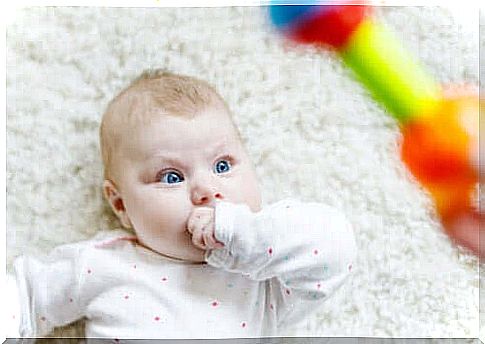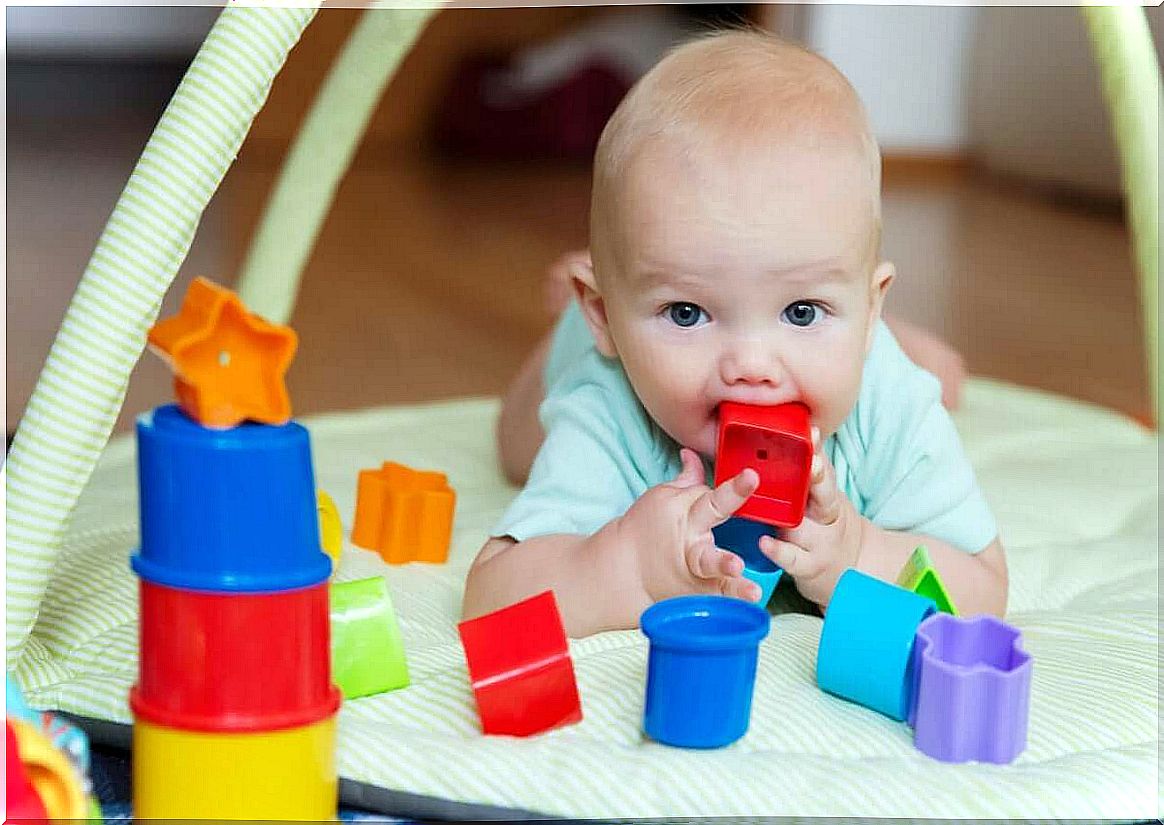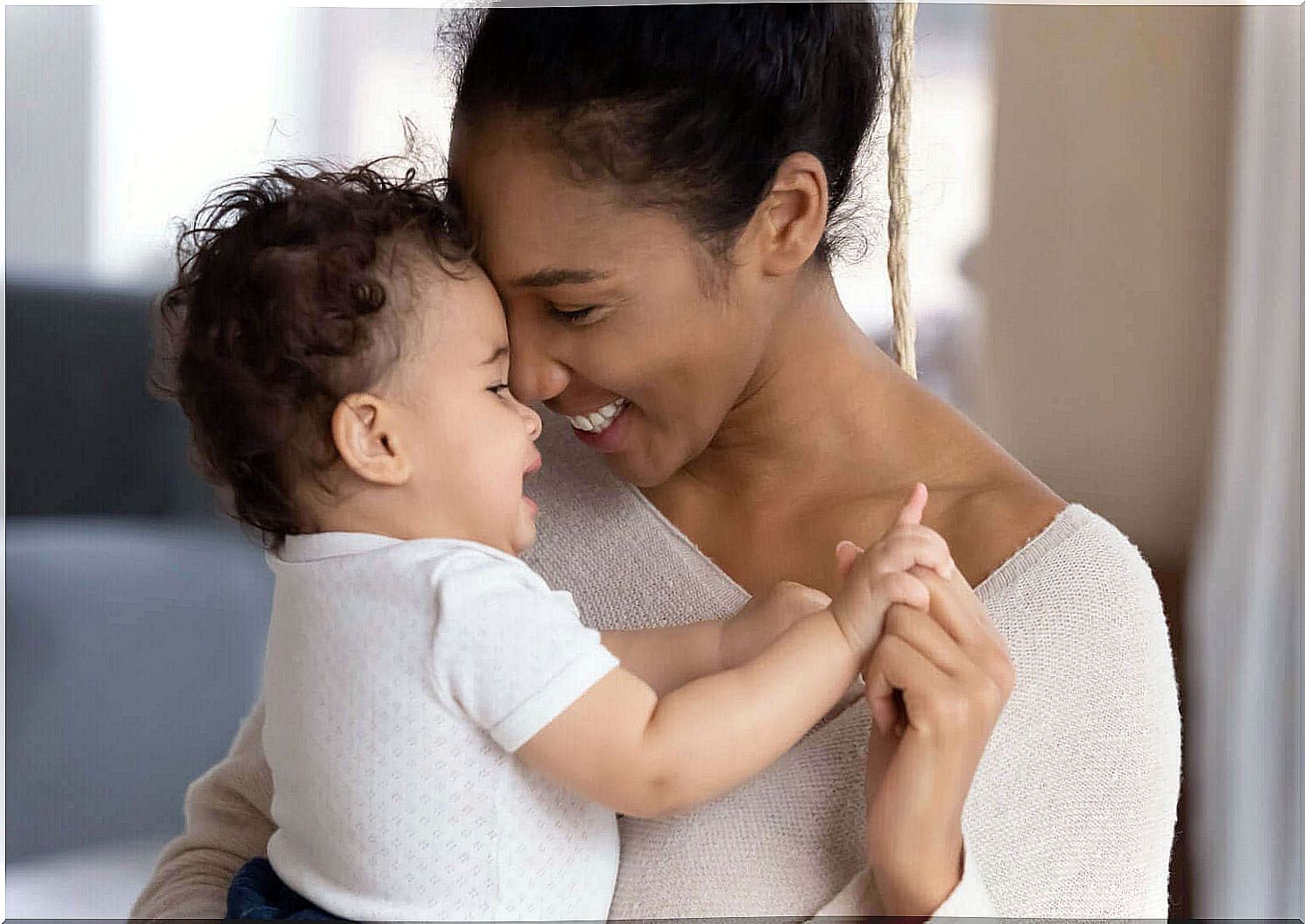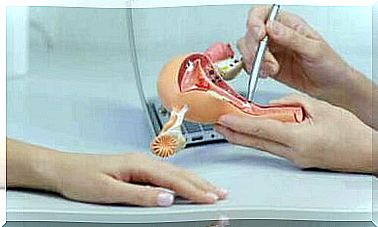Do You Know Why Babies Stare At What They See?

The world is completely new to newborns. They discover this world through their senses. Babies stare at a person or object because it moves, because it dances, because it is bright or because it changes before their eyes.
They chase it with their eyes until a new enigmatic object appears in front of them. Objects that are common to adults are fascinating to babies.
When a shadow or a light crosses their industrious gaze, they begin to stare at it. Adults have already incorporated those sensations into their repertoire, which means that few things seem to surprise us anymore. Everything is familiar and normal to us. But for babies, the colorful mobile above their crib, for example, is a whole universe.
Babies are like sponges. They absorb reality, as it were, and make connections. Countless sensations shape the emotional, physical, and motor responses they use to interact with others from birth. The Spanish Pediatric Association ‘s ‘Practical Guide for Parents’ can be helpful at this stage of intensive learning.
How a baby’s vision develops
Babies’ brains are very plastic. Experts have recently understood that nerve cells can adapt to their environment. Connecting to other neurons, they recognize it through their senses without resorting to the use of words.
Babies are born with an extraordinary ability to learn. Their vision development goes hand in hand with motor and neurological development. In the first three months of life, babies seek, stare, and follow lights or objects that enter their field of vision.
From the third to the fifth month, they see their hands, play with them, and also play with the toys around them. From the ninth to the twelfth month, they touch and play with objects they recognize. The retina matures between six and eleven months. From three to six years, children’s eyesight matures.

The reasons why babies stare at something or someone
Babies stare at something because movement grabs their attention. The neuronal dynamics of babies are comparable only to the plasticity of the world presented before their eyes.
Moving Objects
Moving objects are very interesting for babies. Mobiles are among the most important accessories that experts recommend to stimulate babies.
Make sure the objects you place in front of and close to your baby move in a semicircle through the air, but not too fast. The idea is to engage their eyesight by contributing to ocular motility, which is essential in vision development.
Shiny objects or objects that light up
Spotlights and shadows are also very eye-catching for babies. They focus their attention on contoured shapes and silhouettes, as these do not cause any visual discomfort or irritation.
Babies love details, which they look at with interest and also feel with their hands and fingers. For example, a father’s beard and mustache can make a baby very curious.
Babies stare and are very attracted to colors
Vivid colors and black and white contrasts are eye-catching for babies. However, make sure you don’t stimulate your baby too much as this can exhaust him.
A sign that your baby’s eyes are tired is if they change their gaze abruptly. Playing soft music in the room can accompany the synesthesia of colors, textures and shapes.
When objects and faces have harmonious features
Experts believe that babies stare at “beautiful” faces. However, keep in mind that they are not aware of the socially accepted beauty standards. That is why we believe that they are attracted to soft, harmonious, round and full shapes.
Familiar faces, in which they recognize themselves, make them feel calm, protected and at ease.
When to worry
The problem is not so much when babies are staring at something, but when they have a blank stare and are not interacting with their caregivers. Although every baby develops at a different rate, keep an eye out for the following symptoms:
- If your two month old baby is not looking at the person looking at him. Studies have shown that this is an early sign of autism.
- If your three to four month old baby does not visually follow objects that move next to him and does not smile at people who make eye contact.
- Finally, if your six-month-old does not try to reach for objects within his reach or if he shows no affection for his caregivers.
These symptoms will certainly manifest together with other symptoms, such as, for example, psychomotor development problems, language problems or neurological disorders.
How can you support your baby’s visual development?

Visual stimulation is about emphasizing what you want your baby to see, feel and remember. Colours, movements and shapes aid babies’ perceptual development as well as their adaptation to the environment.
Babies are actively exploring. Associative mechanisms allow them to connect objects, sensations or people with different concepts. For example, care, food, protection, caresses, rest, comfort and satisfaction.
You should know that mirror neurons are a fundamental neurophysiological mechanism in the visual development of babies (Spanish link). They are essential for action, understanding and imitation. Babies show an interest in their mother’s face as early as about seven hours after birth and will soon begin to imitate the facial expressions of their caregivers.
For this reason, when babies stare at what someone is doing before their eyes, they think they are the ones performing the action.
Another process that we cannot overlook is the development of implicit memory, which occurs when babies are about a year and a half old. This allows them to unconsciously capture and store information. They store the experience of the behavior and emotions that their caregivers express or provoke during a playful moment or in a certain situation.
It’s so beautiful when your babies are staring at you!
When your baby looks at you, you probably feel great. In that wondrous moment, your gazes meet and intent and information are conveyed. You communicate.
From that moment on, the caregiver discovers that they can show their baby many things. This helps babies build their personality.









